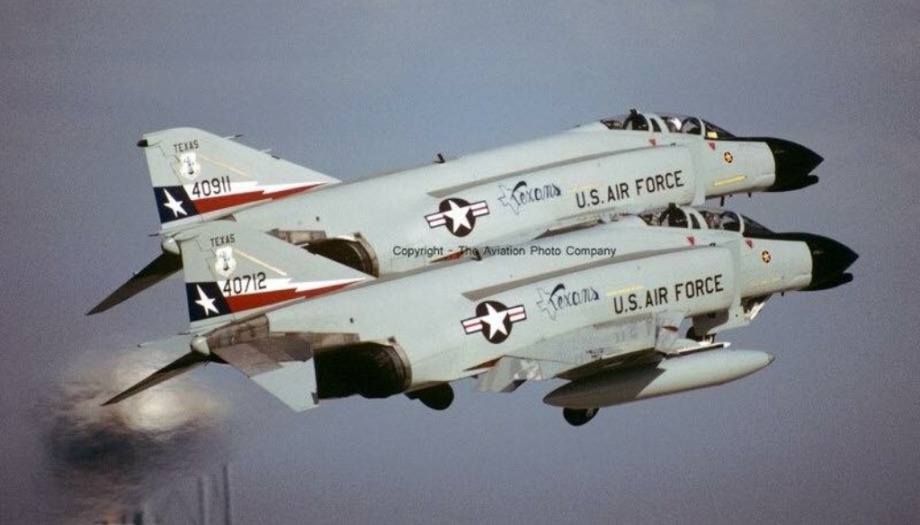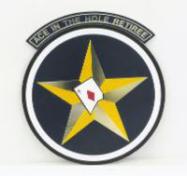
Email: 147th.retirees@gmail.com
Facebook Page: 147th Ace in the Hole Retirees
USAF F-16C block 25 #84-1393 from the 111th FS flies with a special paint job in honor of the squadron's 90th anniversary in 2007. All the colors and markings have specific meanings, reflecting the unit's nine-decade history.
Aircraft was retired in September 2010 and placed on display at the Texas Military Forces Museum, Camp Mabry, Austin.
In November 2007, an F-16C Fighting Falcon from the Texas Air National Guard's 111th Fighter Squadron received a special paint job in honor of the squadron's 90th anniversary.
All the colors and markings have specific meanings, reflecting the unit's nine-decade history. The rudder is painted like a JN-4 Jenny, which the squadron flew in the 1920s. The schemes for the wings and flaps recall the paint schemes of the pre-World War II era.
The blue fuselage represents the Korean War, in which the squadron earned credit for two air victories. The gray underside represents the jet age.
The "N5 A" was the insignia the squadron's P-51 Mustangs sported during World War II, in which the squadron claimed 44 air victories. Also representing World War II is the star on the fuselage, while the star on the wing represents the pre-World War II era.
"Ace in the Hole" and the star on the tail replicate the markings of the squadron's F-84s during the Korean War. The ventral fin, partially obscured, reads "Est. 1917"
In November 2007, an F-16C Fighting Falcon from the Texas Air National Guard's 111th Fighter Squadron received a special paint job in honor of the squadron's 90th anniversary.
All the colors and markings have specific meanings, reflecting the unit's nine-decade history. The rudder is painted like a JN-4 Jenny, which the squadron flew in the 1920s. The schemes for the wings and flaps recall the paint schemes of the pre-World War II era.
The blue fuselage represents the Korean War, in which the squadron earned credit for two air victories. The gray underside represents the jet age.
The "N5 A" was the insignia the squadron's P-51 Mustangs sported during World War II, in which the squadron claimed 44 air victories. Also representing World War II is the star on the fuselage, while the star on the wing represents the pre-World War II era.
"Ace in the Hole" and the star on the tail replicate the markings of the squadron's F-84s during the Korean War. The ventral fin, partially obscured, reads "Est. 1917"
The "Ace-in-the-Hole" insignia is proudly borne by the aircraft of the 147th Fighter Wing. It is one of the oldest insignias in the United States Air Force and rich in tradition and significance.
The star represents the great "Lone Star" State of Texas. The "Ace-in-the Hole" playing card represents strength held in reserve. The black and white border surrounding the insignia signifies oil and cotton, two of Texas' chief natural resources.
The insignia was adopted by the 36th Division Aviation, Texas National Guard, and carried by that honored Division until after World War II, when air units were separated from the Army Guard. A major component of the Division, the 111th Observation Squadron (now recognized as the 111th Fighter Squadron) retained the insignia when reorganization initiated the 147th Fighter Interceptor Group (now recognized as the 147th Fighter Wing) as an outgrowth of the 36th Division Aviation.
The exact date of the adoption of the Ace-in-the-Hole as the official insignia is not known. It is known that in 1931 a totally different insignia (made up mainly of two gargoyles that looked like sea horses) was proposed, however, in 1936, the Ace-in-the-Hole was officially adopted.


